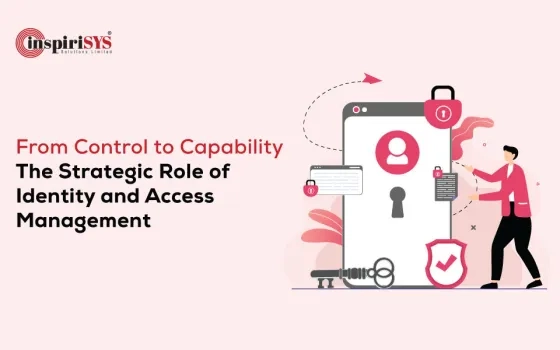Financial fraud is becoming trendy and more complex with the development of ICT and the use of other online transaction systems. Making fraud detection and prevention a challenging problem, fraudsters often coordinate with one another and perform operations that are intertwined with numerous other operations. This is where graph analytics comes in, a technique that can be used to find fraud based on the relations and connections within data. This blog covers the topic of how graph analytics and analysis are revolutionizing the approach to fraud detection in lucrative networks, enabling financial organizations to combat more subtle fraudulent operations more effectively.
What is Graph Analytics?
Graph data analysis is a spectrum of data analysis that focuses on the analysis of graph-structured data items and their interconnectivity. This structure is beneficial for analyzing datasets when important relationships, such as social networks, communication logs, or transaction histories, are naturally complex and entangled. In a graph context, nodes denote objects that include but are not limited to people, accounts, and transactions, while edges depict definitions of interconnectivity between them. Some useful methods can be applied to model and analyze the graphs: to identify clusters and noisy points or provide an intuition about existing relations that can be signs of fraud.
Graph analytics resides very effectively in the middle of this spectrum. It can be of significant value in detecting connections and dependencies that do not become apparent by other forms of financial fraud analysis. This is different from a meat sale and a pig sale analysis where one examines single transactions as opposed to the network analysis, where an organisation can easily identify or notice any strange behaviour in a larger picture.
Why Graph Analytics is Ideal for Fraud Detection
Most conventional approaches to fraud detection are usually centered on transactional data, with the help of statistical models and machine learning procedures used to search for outlying occurrences or deviant, atypical trends. However, this approach does not work well in dealing with fraudsters; especially those that work in groups or those that use multiple networks. Graph analytics limits these challenges, hence giving a more comprehensive view of fraudulent transactions than a method that only looks at the transactions.
1. Uncovering Hidden Relationships: An account's compound consists of several accounts that are linked to perpetrating fraud, including money laundering activities. These relationships can be uncovered by graph analytics since they are latent, and there are clustered and patterned forms that are considered suspicious. For instance, it can identify cases where two or more accounts have been originating from the same IP address or transacting at a high frequency and high values, implying fraudulent activities such as collusion.
2. Real-Time Detection: Graph processing for relationships and transactions means that organizations can identify fraud at the time it is happening. Enhancing real-time graph processing helps to identify fraudulent transactions at an early stage to reduce losses and also bring down response time.
3. Improved Pattern Recognition: They argue that many fraud schemes work in rather cyclical ways—account takeover attempts or criminal application of synthetic identity, for instance, are interrelated. Graph analytics are particularly good at patterns, enabling institutions to detect known fraud patterns as well as new ones.
4. Enhanced Scalability and Complexity Handling: With more people involved in digital transactions, the networks involved also become complex. Graph databases and analytics tools are extremely scalable when it comes to millions of nodes and relations, so the solution is scalable for large financial networks.
Key Applications of Graph Analytics in Fraud Detection
Graph analytics is used in various fraud detection scenarios, from banking and insurance to e-commerce and telecommunications. Here are some prominent applications:
1. Money Laundering Detection
Money laundry is a type of fraud where legal money is passed from one financial account sequentially through another and another, more often than involving banking institutions. The existing systems of transaction monitoring are insufficient for discovering laundering because the subject is not individual transactions but their connections.
It was also possible to map connections through multiple accounts to track individual or repeated transactions used in laundering, shell accounts, or nested transactions. Through visualization of the transactional flow map, it becomes easy for analysts to note areas of fund flow anarchy and follow lavishing pathways back to their beginning.
2. The first two emerging fraud risks are Account Takeover and Synthetic Identity Fraud.
Online banking and e-commerce have other more rampant types of fraud, such as account takeovers and synthetic identity fraud. Some con artists employ synthetic identities—real and imaginary—to obtain loans or credit. These identities could be connected to other synthetic or something like that, which are very difficult to distinguish by traditional methods, for instance, those based on machine learning.
Generally, graph analytics help one uncover outliers, such as many accounts related to similar phone numbers, addresses, or devices. This ensures that Miam aims to frustrate identity fake creation and prevents fraudsters from hijacking genuine accounts. By correlating relations in these accounts, financial institutions can block a person’s creation of multiple accounts and freeze unauthorized attempts at log-in.
3. Insurance Fraud
Insurance fraud is, therefore, perpetrated by premeditated groups who present many false claims using fake or exaggerated data. Fraud patterns, including relationships between claimants, doctors, and places of the accident within the network, can be determined by graph analytic means. By the use of these maps, insurers can detect different cases where claimants collaborate with service providers since the system detects fraud rings that are operational in multiple claims.
For instance, using graph analysis, it is possible to see that several individuals claiming different accidents use the same medical provider or mechanic shop; this may be an indication of fraud.
4. Credit Card Fraud Detection
Credit card fraud detection often relies on transaction data to spot abnormal activity. Graph analytics enhances this process by analyzing the relationships between transactions, cardholders, and locations. For instance, if multiple credit cards are used across a cluster of suspicious merchant accounts, graph analytics can reveal this network of fraudulent activity, helping card issuers block or investigate the transactions.
Moreover, by identifying patterns such as unusual spikes in purchases from specific vendors, banks can proactively detect and investigate fraudulent activity before it causes significant losses.
Challenges and Future of Graph Analytics in Fraud Detection
While graph analytics offers a revolutionary approach to fraud detection, it also comes with challenges:
1. High Computational Cost: Computing and analyzing graphs of such scale in real-time entail substantial computation. While the data is scaling, the organizations require a robust expansion to work on graph processing effectively.
2. Complex Implementation: The issue that normally arises when using graph analytics is the difficulty in finding professional experts in graph theory, and knowledge in data science may be a limiting factor for some organizations.
3. Privacy Concerns: Graph analytics deals with relationships and connections and can in one way or another, infringe on privacy. Graph analytics used for fraud detection need to be compliant with data protection regulations.
I see a definite potential for graph analytics in fraud identification in the future. It has been widely postulated that as technology evolves, graph databases and analytics tools will only grow in capabilities and usability. Combining AI and machine learning with graph analytics improves its application in fraud detection since it can identify fraud in real-time and with high accuracy.
Conclusion
Graph analytics is transforming fraud detection by uncovering hidden connections within complex networks, enabling institutions to detect sophisticated fraud schemes that traditional methods miss. As more companies adopt this approach, fraud detection becomes more precise and resilient. For those interested in learning these advanced skills, a data science course in Chennai offers training in graph analytics and fraud detection techniques, preparing professionals for impactful roles in financial security.






























